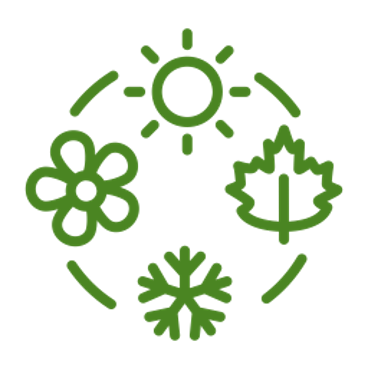
Ranglana Peak Expedition
TREK DIFFICULTY
Difficult
TREK DURATION
17 Days
HIGHEST ALTITUDE
5554 m
GROUP SIZE
12
TREK DISTANCE
70 Km
BASECAMP
Uttarakhand
BEST TIME
May to October
PICKUP POINT
Dehradun (Prince Chowk)
Ranglana Peak Expedition Overview
Ranglana Peak is one of the most beautiful and adventurous expeditions of the Indian Himalayas. This beautiful Himalayan peak is located in the Garhwal division of Uttarakhand. The Ranglana PeakExpedition has an altitude of 5554 m and is beloved by seasoned trekkers and mountaineers. This is a raw beauty and is known for its challenging terrain. Ranglana Peak is situated in the Rupin-Supin Valley of Uttarkashi. This expedition is the perfect fusion of adventurous trails, culture, and serene landscapes. Ranglana Peak expedition is not just a trek but an exploration of unspoiled wilderness.
The Ranglana Peak Expedition is rich in biodiversity and culture. You can witness the centuries-old traditions, rare flora, and fauna. This peak is less explored due to the difficulty level. The expedition is less crowded and very pristine. You will start your journey through oak and pine forests. After crossing the lush green forests, you will enter beautiful meadows. In the monsoon, these meadows fill with wildflowers, offering a picture-perfect scene. After some ascent, you will get a huge change in the views as the meadows will change to snowfields. Ranglana Peak Expedition offers panoramic views of Swargarohini, Kalanag, and Bandarpunch peaks.

History Of Ranglana Peak Expedition
Ranglana Peak Expedition is a majestic yet lesser-known expedition of our country. The locals living in nearby villages like Dhaundan and Supin believed that Rangalan Peak is very sacred. Locals consider Rangalan Peak to be the home to their local deities. Uttarakhand is home to many famous high-altitude expeditions, but Ranglana Peak remained untouched for a very long time. The history of Ranglana Peak depends more on the local exploration and recent mountaineering activities. The word Ranglana means vibrant hues of the alpine landscape and the reddish tones of the sunrise.
The Ranglana peak exploration gained attention in the early 2000s. After expediting all famous peaks, the mountaineer community started exploring offbeat locations. Local guides documented the first Ranglana peak expedition. This documentation was more for exploration. Today, the Ranglana peak expedition is emerging as an introductory mountaineering expedition. This is a perfect introductory expedition for future climbers. The trail passes through forests, moraines, and snowfields, making it a perfect choice for new mountaineers. Today, Ranglana Peak is emerging as a perfect expedition with a fusion of raw nature, tradition, and mountaineering spirit.
Highlights Of Ranglana Peak Expedition
Hidden Gem of Uttarakhand
Ranglana Peak is one of the most majestic expeditions of Uttarakhand. This is a lesser-known peak that offers untouched natural beauty. Ranglana Peak is not explored by many people, making it a perfect place for people who don’t like crowds. This expedition can be a perfect blend of beauty and adventure.
Panoramic Himalayan Views
The trail to Ranglana Peak Expedition offers a majestic view of the Himalayan Peaks. When you start ascending to high-altitude areas, you will get picture-perfect views of Swargarohini, Black Peak, and Bandarpoonch. The sunrise is very stunning as you will get a 360-degree view of the Himalayan ranges.
Diverse Landscape
You will start your summit through dense pine and oak forests. Once you cross the forest area, beautiful alpine meadows will welcome you. You may also witness shepherds with their herds in these big alpine meadows. When you ascend further, you will be walking on icy streams and glacial zones.
Rich Culture
This part of Uttarakhand still holds roots to centuries-old traditions and customs. Your trail passes through beautiful villages like Supin and Dhaundar, where you can witness the traditional Himalayan culture. You can feel the culture in their food, architecture, and even in their lifestyle. These locals are also known for their great hospitality.
Difficulty Level Of Ranglana Peak Expedition
Ranglana Peak Expedition is rated as a Difficult expedition. This expedition is suitable for seasoned trekkers and mountaineers. The high altitude and length of this expedition increase the difficulty level. Trekkers should gain good experience in high-altitude treks before attempting the Ranglana Peak Expedition.
High-Altitude Expedition
The major factor that increases the difficulty level is the altitude. This peak stands at a height of 5554 m, where the oxygen level can drop significantly. Most climbers start getting AMS symptoms after reaching 4000 m. Getting AMS symptoms like headache, nausea, and fatigue is common in this expedition. Trekkers should acclimate properly for summiting Ranglana Peak. The weather at high altitudes is also very unpredictable.
Difficult Terrain
The trail to Ranglana Peak Expedition passes through different terrains. You will start your trek from easy sections like forests, trails, and meadows. When you ascend to a higher altitude, you will be walking on moraine and snowfields. The final summit ridge is very challenging as you have to pass steep snow slopes.
Technical Climbing
Ranglana Peak Expedition does not require high climbing skills, but the trekkers should be familiar with basic mountaineering knowledge. The final summit push requires basic technical gear like an ice axe, crampons, a harness, ropes, etc. You have to pass the snow and ice section from the base camp to the peak.
Best Time To Visit The Ranglana Peak Expedition
The best time to plan the Ranglana Peak Expedition is during the early monsoon. The weather will be pleasant, and the trails will be dry. Another good time can be post-monsoon, when the views will be clear and the expedition can be more joyful. In winter, you can’t do the Ranglana Peak Expedition as this region becomes inaccessible due to heavy snowfall.
- Ranglana Peak Expedition from Mid-May to Late June
Pre-monsoon is the best time to summit Ranglana Peak. The sky will be clear and there will be less possibility of rain. The temperature will be pleasant in the daytime, and you can still find fresh snow in the high-altitude areas. This is an ideal time for mountaineers and snow-trekking experts.
- Ranglana Peak Expedition from July to Mid-September
Planning the Ranglana Peak Expedition in the monsoon is not recommended. During the monsoon, the lower altitude areas receive a good amount of rain. It makes the trail slippery and prone to landslides.
- Ranglana Peak Expedition from Mid-September to Mid-October
You can also plan your expedition post-monsoon. The trail will start drying up, and you can see clear views of Swargarohini and other Himalayan peaks. There will be less snow and more rocky trails. This season is suitable for people who are new to snow walking.
How To Reach Ranglana Peak Expedition
You will start your Ranglana Peak Expedition from Sankri. This small village is known for its traditional wooden houses and centuries-old culture. The major city near Sankri is Dehradun. You can reach Dehradun by various means of transport.
Sankri via Road
Sankri is well-connected to cities by road. You can find a few buses to Sankri from Dehradun. To reach Sankri, look for the buses to Dehradun. You can find government and bus services to Dehradun from Delhi, Chandigarh, and various other major cities. From Dehradun, take a bus or shared taxi to Sankri.
Sankri via Train
The nearest railway station to Sankri is Dehradun Railway Station. This railway station is well-connected to various metro cities like Delhi, Lucknow, Mumbai, Kolkata, etc. Some express trains like Shatabdi Express, Nanda Devi Express, etc, are available from Delhi daily. After reaching Dehradun, look for a shared taxi to Sankri.
Sankri via Air
The nearest airport to Sankri is Jolly Grant Airport (Dehradun). You can find direct flights to Dehradun from all major cities. Take a flight to Dehradun and then take a taxi to the ISBT. Now look for a bus or shared taxi to Sankri.
Things To Carry In The Ranglana Peak Expedition
Ranglana Peak Expedition is a long expedition, and trekkers require the right gear to make it a success safely. The expedition passes through forests, meadows, snowfields, and glacial sections. You should pack your pack with carefully selected items.
- Clothing
Get a backpack (65 L) that can provide good back support. Your bag should be waterproof. Now pack 2-3 quick dry t-shirts and 2 pairs of thermals (upper and bottom). Pack 2 fleece jackets and one down jacket. You can also pack a woolen sweater for extra warmth. For the outer layer, you should get a waterproof and windproof jacket. Get a poncho and waterproof trekking pants for unexpected rain. Now pack a woolen beanie, sun cap, and two pairs of woolen gloves.
- Footwear
Get comfortable trekking shoes with good grip and ankle support. Now pack a pair of gaiters for crossing snow sections. Pack 5-6 pairs of socks (woolen and cotton). You should also pack a pair of sandals for the campsite.
- Personal Care
For personal items, start with a toothbrush, soap, and toothpaste. Now pack a quick dry towel, toilet paper, and hand sanitizer. Carry good sunscreen, moisturizer, and lip balm. Make a small first-aid kit with diamox, painkillers, muscle relaxant spray, band-aid, etc. You can also pack a small foldable daypack (20L) for summit day.
Day 1: Dehradun to Sankri: Drive 187 KM in 7 to 8 hours
Day 2: Sankri to Obra Campsite (2,330 m): 5 KM trek in 4 hours
Day 3: Obra Thatch to Bhawa Waterfall Campsite (3,420 meters): 8 KM trek in 6 hours
Day 4: Bhawa Waterfall Campsite to Dev Kyara (4,100 meters): 5 KM trek in 4 hours
Day 5: Devkiyara (4100 m) to Camp 1 (4687 m)
Day 6: Acclimatization Day at Camp 1
Start the day with a gentle acclimatization activity around Camp 1. This could include short hikes, breathing exercises, or light stretching to help your body adjust to the higher altitudeSpend some time resting at Camp 1. Take this opportunity to hydrate well and nourish your body with balanced meals..Take a leisurely stroll around Camp 1 to enjoy the stunning views and immerse yourself in the natural beauty of the surroundings. It’s also an excellent opportunity for photography.
Day 7: Camp 1 to Camp 2 (4950 m)
Day 8: Camp 2 to summit camp (Load Ferry)
Day 9: Camp 2 to summit camp
Have a hearty and nutritious breakfast to fuel your body for the strenuous ascent. Embark on the demanding climb towards the Summit Camp. This section of the trek will likely be the most challenging, involving steep slopes, potentially icy or rocky terrain, and high altitudes.
Pay close attention to your pacing. Move at a steady and sustainable pace, taking regular breaks to catch your breath and acclimatize to the thinning air. Reach the Summit Camp, which may be located at a higher altitude, where you’ll set up tents and establish a base for the summit attempt. Take some time to rest, rehydrate, and acclimatize.
Day 10: Acclimatization
Begin the day with a gentle acclimatization activity around the Summit Camp. This could include short hikes, breathing exercises, or light stretching to help your body adjust to the extreme altitude.Spend some time resting at the Summit Camp. Focus on staying well-hydrated and consume balanced meals to nourish your body for the challenging ascent Engage in a briefing or educational session conducted by your expedition leaders. This may cover important topics like altitude sickness prevention, emergency procedures, and safety protocols specific to the summit day. Go over the summit route with your expedition leaders, discussing any potential challenges, key landmarks, and important safety measures.
Day 11: Summit camp to summit attempt and descent to summit camp
Day 12: reserved for summit attempt
The day reserved for the summit attempt is a critical stage of the expedition.
Day 13: Reserved for summit attempt
The day reserved for the summit attempt is a critical stage of the expedition.
Day 14: Summit camp to camp 1
Day 15: Camp 1 to Obra ( 3500 m )
Start the descent from Camp 1. You’ll be navigating through the terrain you ascended earlier in the expedition, but this time heading downhill.Take in the changing landscape as you descend. You’ll notice different perspectives and views compared to your ascent.Reach Obra, marking the end of your trek. Settle into your accommodations or designated area for rest.
Day 16: Obra Campsite to Sankri
Early in the morning, we leave the campsite . The walk is downhill and hence takes lesser time than before. We walk alongside the River until we finally arrive at the place where we started the trekking Journey, from where a vehicle takes us back to Sankri. We retire for the day in camp alongside the river or in a guest house in Sankri.
Day 17: Sankri to Dehradun: 187 KM drive in 7 to 8 hours
Expedition of Ranglana Peak concludes today as we leave Sankri and reach Dehradun by late afternoon.
Our treks are specially designed by the experienced team at Himalaya Shelter, taking you on an adventure of a lifetime all while making you connect not only with the bountiful nature but also with yourself and with others on the trek with you, creating wonderful memories which will last you a lifetime. All Himalaya Shelter treks are guided by experienced Trekkers having vast knowledge and experience of the region, providing with insightful information and stories pertaining to the region’s flora and fauna and the history of the region, whilst on the trek. It is safe to say that on successfully completing the trek, one will gain tremendous insight and experience along with lifetime memories.
Trek Package Inclusions
- Transport - Support from Dehradun, Pickup time: 7:30 am, Prince Chowk, Near Dehradun Railway Station
- Accommodation – At Base Camp, stay at a local homestay or guest house for one night each, which will give you an insight into the authentic lifestyle of the locals. (INR 5000 per person extra for single sharing throughout the trek)
On Trek stay in a 2-person Vango Halo Pro/A-Shape tent, which is to be shared by two trekkers, built to withstand extreme weather conditions and at the same time making you comfortable after a hard day’s trek. - Camping Equipment – specially designed sleeping bags that can withstand harsh weather conditions, foam mattresses. Other safety gear like microspikes, gaiters, an ice axe, and helmets will be provided.
- Medical Kit – our team will be equipped with an extensive medical kit, which our team is trained and experienced to use. Oxygen cylinders are used after they are thoroughly inspected throughout the Trek. Even campsites have large oxygen cylinders as backups.
- Permission - Forest entry charges for Indian nationals (Additional charges will be applicable for international tourists)
- Meals – Breakfast, packed lunch (on trek days), evening snacks, and dinner will be served. A hearty, delicious, and nutrition-filled Veg meals with egg preparation will be provided throughout the trek. (Jain and Vegan Food can also be arranged on prior notification.)There will be a dedicated Kitchen Tent along with a dining tent, which will have a dining table too.
- Our Team – A highly experienced and AMC-certified Trek Leader who will help ensure that the entire trek goes smoothly and safely while navigating the challenging conditions during the trek, and is skilled enough to navigate any medical emergency that can arise during the trek. Local and route Guides who are well-versed with the region and provide an in-depth insight into the local customs and knowledge of the flora and fauna endemic to the region. A dedicated Kitchen staff, which includes a Cook, a helper, and other support staff. There will also be porters and mules to carry common equipment.
- Cloakroom - We have a cloakroom facility available for extra luggage. Every trekker is permitted to leave their luggage behind at no charge.
Exclusions
- Personal expenses like tips, personal medicines, phone calls etc.
- Travel Expenses - Travel expenses from your hometown to the mentioned Pick-Up Point are not included in the trek fee.
From the scheduled pick-up spot to the base camp, we have our own fleet of vehicles like Bolero, Innova, Dezire, or Tempo Traveler (12-seater). This is be shared by trekkers for a pre-decided amount. All vehicles are non-AC. - Personal Equipment - Any personal gear like jackets, shoes, cutlery, or backpacks are not included in the trek fee. We recommend renting them from our Rental Store for an affordable fee. This can be pre-arranged to avoid last-minute hang-ups.
- Offloading - We encourage carrying your backpack to get into the true spirit of trekking. However, if needed, you can opt to offload your personal luggage of up to 12 kgs for an additional cost of INR 400 per bag per day.
- Trek Insurance - A mandatory trek insurance fee is charged in addition to your trek fee. Since most medical insurance doesn’t cover adventure activities, trek insurance offers essential coverage, enhancing your safety without a significant financial burden.
- Buffer day on the trek - We have kept a buffer day on the trek to account for any weather-related delay. If this is utilized, you will need to pay an extra amount to your trek leader.
- Anything apart from inclusions
- Please carry a lunch box for a packed lunch/breakfast to avoid using polythene and Aluminium foil.
Keeping the Himalayas clean is our own responsibility. Reduce the use of Plastic when you are in the abode of the Sacred Himalaya. 🌱
Read More on Ranglana Peak Expedition
Photo Gallery








Treks by Categories
Treks By Month

Treks By Experience





















